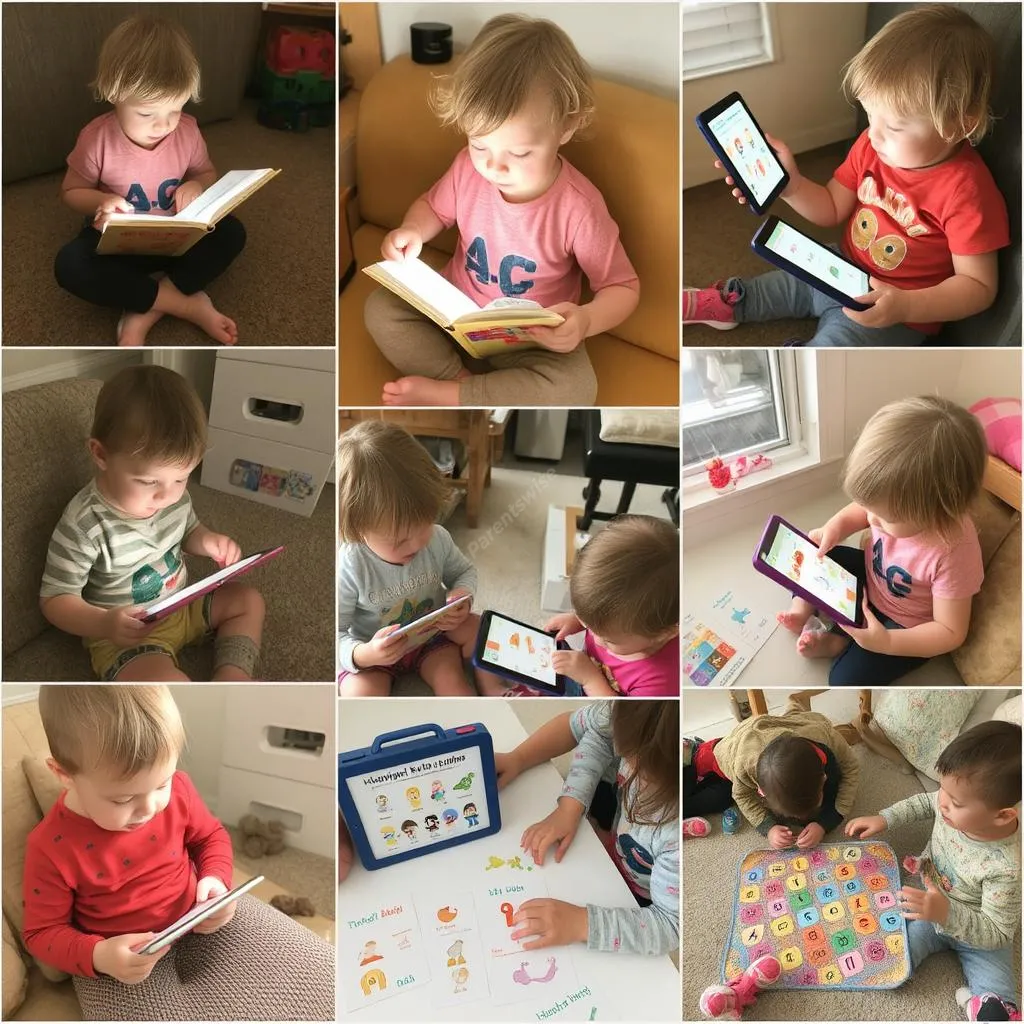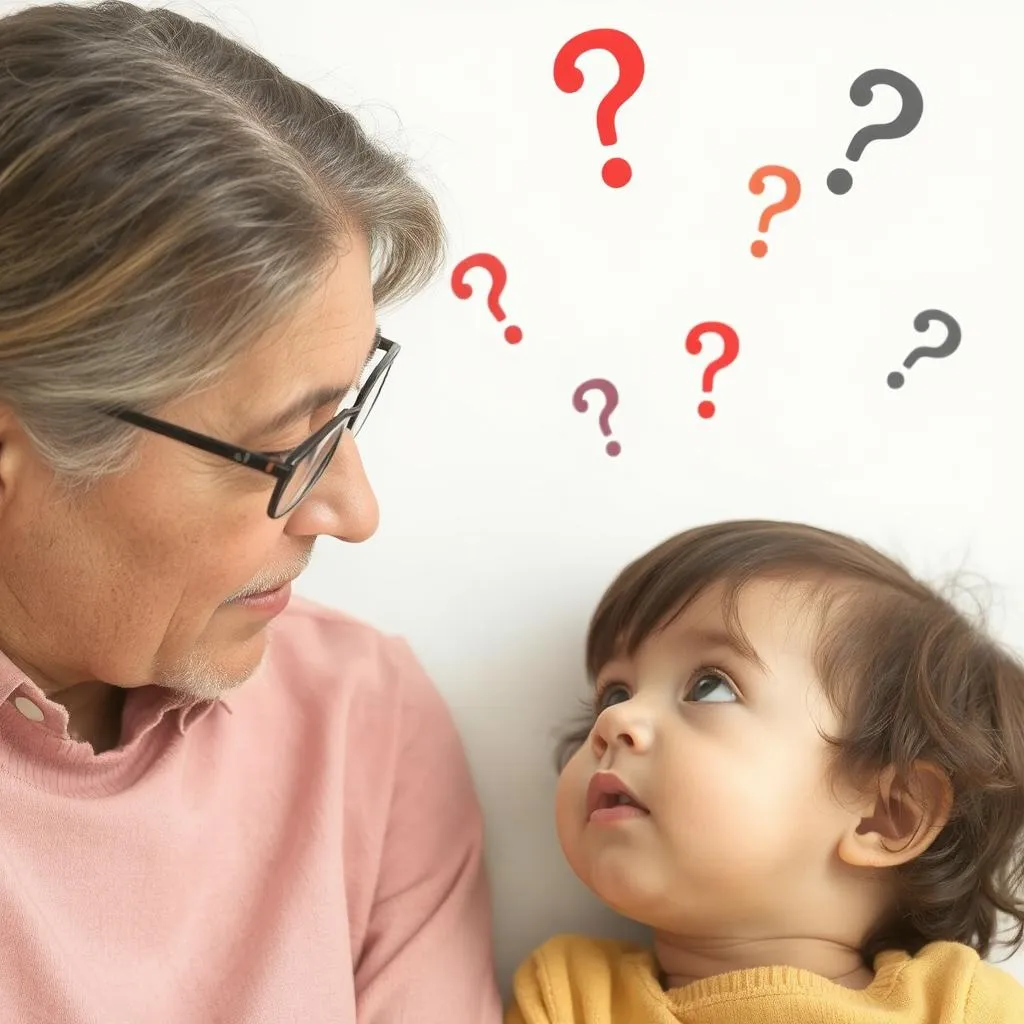When Should You Start Teaching a Second Language?

The Magic of Early Language Learning
Did you know that young children who learn a second language use the same brain region for both languages? This amazing fact shows how powerful early childhood is for learning languages.
Are you wondering when to start teaching your little one a new language? Is there a perfect time to begin? Or can you start too early?
What You’ll Learn
In this article, we’ll explore:
- The best time to introduce a second language to preschoolers (ages 3-5)
- The many benefits of early language learning
- How early language skills can boost your child’s future
Experts often say that earlier is better for language learning. We’ll show you why and how you can help your child succeed in becoming bilingual.
Ready to unlock your child’s language potential? Let’s dive in!
The Benefits of Early Second Language Learning

Boost Your Child’s Brain Power
Learning a second language early can give your child amazing cognitive advantages. Here’s how:
- Problem-solving skills: Bilingual children often think more flexibly and creatively.
- Improved memory: They practice remembering and using different words, boosting overall memory.
- Better attention span: Switching between languages helps children focus better.
These skills don’t just help with languages – they can improve overall learning and school performance.
Open Doors to New Cultures
When children learn a new language, they gain more than just words. They discover:
- New ways of thinking: Different languages express ideas in unique ways.
- Cultural awareness: Language and culture are deeply connected.
- Empathy: Understanding others becomes easier when you speak their language.
This cultural knowledge can help your child become a more understanding and open-minded person.
Set Up for Future Success
In today’s global world, knowing more than one language is a huge advantage. It can lead to:
- Better job opportunities: Many companies value bilingual employees.
- Higher earning potential: Bilingual people often earn more in their careers.
- Easier travel: Speaking the local language makes trips more enjoyable and meaningful.
By starting early, you’re giving your child a head start on these future benefits.
A Natural Learning Process
Young children learn languages more easily than adults. They:
- Absorb sounds and pronunciation naturally
- Learn grammar intuitively, without complex rules
- Feel less self-conscious about speaking a new language
This natural ability makes early childhood an ideal time to introduce a second language.
Remember, these benefits come from consistent, long-term exposure to the language. In the next section, we’ll explore the best age to start this exciting journey!
The Optimal Age to Start: Is Earlier Always Better?
The “Critical Period” Theory
You may have heard that there’s a “critical period” for language learning. But what does this mean?
- The theory suggests there’s a specific window of time when learning a language is easiest.
- Some experts believe this period ends around puberty.
- After this time, language learning might become more challenging.
But don’t worry! Recent research shows it’s not quite that simple.
What New Research Tells Us
Recent studies have found:
- There’s no strict cut-off age for language learning.
- Different language skills may have different optimal periods.
- Motivation and exposure play huge roles in language success.
So, while earlier can be better, it’s never too late to start!
Why Preschool Years (3-5) Are Great for Language Learning
Starting in the preschool years offers many advantages:
Brain Plasticity
- Young brains are incredibly flexible.
- They can form new connections easily.
- This makes learning new sounds and grammar patterns easier.
Natural Absorption
- Preschoolers learn languages more naturally, like they learned their first language.
- They pick up accents and pronunciation with ease.
Less Self-Consciousness
- Young children are often less worried about making mistakes.
- They’re more willing to try out new words and phrases.
Fun and Play
- Language learning can be incorporated into games and activities.
- This makes the process enjoyable and stress-free.
Building on Existing Skills
- Preschoolers are already developing language skills in their native tongue.
- A second language can complement this natural development.
A Simple Comparison
Here’s how language learning compares at different ages:
| Age Group | Advantages | Challenges |
|---|---|---|
| Preschool (3-5) | Natural learning, less self-conscious, brain plasticity | May need more repetition |
| School-age | Can use reading/writing skills, understand grammar rules | More self-conscious, busier schedules |
| Adults | Strong motivation, can use various learning strategies | May struggle with pronunciation, less free time |
Remember, every child is unique. The best age to start depends on your family’s situation and your child’s individual needs.
In the next section, we’ll explore practical methods for introducing a second language to your preschooler!
Methods for Introducing a Second Language to Preschoolers

Introducing a second language to your preschooler can be fun and rewarding. Let’s explore some effective methods:
1. Immersion Programs
Immersion programs surround your child with the new language.
- How it works: Most or all activities are conducted in the target language.
- Benefits:
- Rapid language acquisition
- Natural learning environment
- Challenges:
- Can be intense for some children
- May not be available in all areas
2. Bilingual Education
Bilingual education uses both the native and target languages.
- How it works: Instruction is given in both languages, often alternating.
- Benefits:
- Balanced development of both languages
- Gradual transition to the new language
- Challenges:
- Finding quality bilingual programs
- Ensuring equal exposure to both languages
3. Home-Based Learning Strategies
You can introduce a second language at home with these fun methods:
a. Language Learning Apps and Games
- Use interactive apps designed for preschoolers.
- Try games like memory matches with words in both languages.
b. Bilingual Books and Storytelling
- Read bilingual storybooks together.
- Tell familiar stories in the new language, using gestures and pictures.
c. Music and Videos in the Target Language
- Listen to children’s songs in the new language.
- Watch age-appropriate shows with simple dialogue in the target language.
Comparison of Methods
Here’s a quick look at how these methods compare:
| Method | Time Commitment | Cost | Effectiveness | Fun Factor |
|---|---|---|---|---|
| Immersion | High | High | Very High | Medium |
| Bilingual Education | Medium | Medium | High | High |
| Home-Based Learning | Flexible | Low to Medium | Medium to High | Very High |
Tips for Success
No matter which method you choose:
- Be consistent in your approach.
- Make it fun and engaging for your child.
- Celebrate small victories and progress.
- Be patient – language learning takes time.
Remember, the best method is one that fits your family’s lifestyle and your child’s learning style. In the next section, we’ll share some practical tips for creating a supportive language learning environment at home!
Practical Tips for Parents

Introducing a second language to your preschooler can be an exciting journey. Here are some practical tips to help you along the way:
A. Creating a Supportive Language Learning Environment at Home
Make it visible:
- Label household items in both languages.
- Display alphabet posters or word charts in the target language.
Set a language schedule:
- Designate certain times of the day for the second language.
- For example, “Spanish at dinner time” or “French during bath time.”
Lead by example:
- Show enthusiasm for the language yourself.
- Try learning alongside your child if you’re not fluent.
B. Incorporating the Second Language into Daily Routines
Mealtime language practice:
- Name foods and utensils in the target language.
- Use simple phrases like “I’m hungry” or “More, please” consistently.
Bedtime stories:
- Read bilingual books or tell simple stories in the new language.
- Gradually increase complexity as your child’s skills improve.
Playtime language immersion:
- Narrate your child’s play in the target language.
- Teach simple game instructions in both languages.
C. Balancing Native Language Development with Second Language Learning
Maintain strong native language skills:
- Continue reading and conversing in your home language.
- Explain that knowing two languages is a special skill.
Avoid pressure:
- Let your child mix languages if they need to.
- Celebrate all attempts at using the new language.
Encourage connections:
- Help your child notice similarities and differences between languages.
- Make it a fun “language detective” game.
D. Dealing with Potential Challenges and Setbacks
Stay patient:
- Language learning takes time. Progress may seem slow at first.
- Celebrate small victories along the way.
Handle resistance positively:
- If your child resists, try making the activities more fun or game-like.
- Take breaks if needed, but maintain exposure to the language.
Address confusion:
- It’s normal for children to mix languages initially.
- Gently provide the correct word or phrase in the appropriate language.
Seek support:
- Connect with other bilingual families for playdates and support.
- Consider joining language learning groups or online communities.
Remember:
- Consistency is key in language learning.
- Keep it fun and low-pressure.
- Every child learns differently – adapt your approach as needed.
By following these tips, you’ll create a positive, language-rich environment that supports your preschooler’s journey to bilingualism. In our next section, we’ll address some common concerns and misconceptions about early second language learning!
Common Concerns and Misconceptions

Many parents have questions about teaching a second language to their preschoolers. Let’s address some common concerns:
Q: Will learning a second language confuse my child?
A: No, children can learn multiple languages without confusion.
- Young brains are wired to learn languages.
- Children naturally separate different languages as they learn.
- Mixing languages (code-switching) is normal and temporary.
Remember: Bilingual children may start talking slightly later, but they quickly catch up and often surpass their monolingual peers in language skills.
Q: What if my child mixes languages?
A: Mixing languages is a normal part of the learning process.
- It’s called “code-switching” and it’s temporary.
- Children eventually learn to use each language separately.
- Mixing shows your child is actively processing both languages.
Tip: Gently repeat the mixed phrase using the correct language, without criticizing.
Q: Do I need to be fluent in the second language to teach it?
A: You don’t need to be fluent, but consistent exposure is key.
- Use resources like books, apps, and videos to supplement your teaching.
- Learn alongside your child – it’s a great bonding experience!
- Consider language classes or playgroups for additional exposure.
Remember: Your enthusiasm is more important than perfect pronunciation.
Q: Won’t learning two languages slow down my child’s overall development?
A: No, bilingualism often enhances overall development.
- Bilingual children often have better problem-solving skills.
- They typically show improved cognitive flexibility.
- Language skills in one language often transfer to the other.
Fact: Studies show bilingual children often outperform monolingual peers in various cognitive tasks.
Q: Is it too late to start if my child is already in preschool?
A: It’s never too late to introduce a new language!
- Preschool age (3-5) is still an excellent time to start.
- Children this age are natural language learners.
- Early exposure is beneficial, but later learning is still valuable.
Tip: Start with simple, fun activities to spark interest in the new language.
Key Takeaways:
- Bilingualism is an asset, not a source of confusion.
- Patience and consistency are crucial in the learning process.
- Every child’s journey is unique – celebrate all progress.
- It’s never too late to introduce a new language.
Remember, learning a second language is a gift that will benefit your child throughout their life. In our next section, we’ll discuss how to choose the right second language for your preschooler!
Choosing the Right Second Language

Selecting a second language for your preschooler is an important decision. Here are some factors to consider and popular choices:
A. Factors to Consider
Family Heritage
- Does your family have roots in another culture?
- Learning this language can help your child connect with their heritage.
Community Resources
- What languages are common in your area?
- Look for local language classes, cultural events, or playgroups.
Global Language Trends
- Consider languages that are widely spoken or growing in importance.
- Think about future travel or career opportunities.
Your Child’s Interest
- Has your child shown curiosity about a particular language or culture?
- Child-led interest can boost motivation and learning.
Available Learning Materials
- Are there quality resources available for teaching this language?
- Consider books, apps, shows, and educational tools.
B. Popular Language Choices for Preschoolers
Here’s a brief overview of some popular language choices:
Spanish
- Why choose it: Widely spoken, growing importance in the U.S.
- Benefits:
- Large Spanish-speaking population in many areas
- Abundant learning resources
- Challenges:
- Different dialects might cause some confusion
Mandarin Chinese
- Why choose it: Most spoken language globally, growing economic importance
- Benefits:
- Exposure to a non-Latin writing system
- Potential career advantages
- Challenges:
- Tonal language can be difficult for English speakers
- Limited immersion opportunities in some areas
French
- Why choose it: Widely spoken globally, official language in 29 countries
- Benefits:
- Similar alphabet to English
- Rich cultural heritage
- Challenges:
- Pronunciation can be tricky
- Less common in some regions of the U.S.
Comparison Table: Popular Second Languages
| Language | Global Speakers | Career Opportunities | Learning Difficulty* | Cultural Impact |
|---|---|---|---|---|
| Spanish | 543 million | High | Moderate | High |
| Mandarin | 1.1 billion | Very High | High | High |
| French | 267 million | High | Moderate | High |
*For English speakers, according to the U.S. Foreign Service Institute
Remember:
- There’s no single “best” language for all children.
- Consider your family’s unique situation and goals.
- The best choice is a language your family can support consistently.
By carefully considering these factors, you can choose a second language that will enrich your child’s life and open up new opportunities. In our conclusion, we’ll recap the key points about when and how to start teaching a second language to your preschooler!
Conclusion: When Should You Start Teaching a Second Language?

As we wrap up our exploration of second language learning for preschoolers, let’s recap the key points:
Key Takeaways:
Early Start, Big Advantages
- The preschool years (3-5) are an excellent time to introduce a second language.
- Young brains are naturally wired for language acquisition.
Benefits Galore
- Bilingualism boosts cognitive skills, cultural awareness, and future opportunities.
- Early language learning can enhance problem-solving and memory skills.
Multiple Methods Available
- From immersion programs to home-based learning, there are many ways to introduce a new language.
- The best method depends on your family’s unique situation.
Consistent Exposure is Key
- Regular, enjoyable exposure to the language is more important than perfection.
- Incorporate the language into daily routines for natural learning.
Common Concerns Addressed
- Learning multiple languages won’t confuse your child.
- It’s never too late to start, but earlier can offer some advantages.
Choosing the Right Language
- Consider factors like family heritage, community resources, and global trends.
- The best choice is one that aligns with your family’s goals and resources.
Your Next Steps:
- Assess Your Situation: Consider your family’s language background and goals.
- Explore Resources: Look into local language programs, books, apps, and online resources.
- Start Small: Begin with simple words and phrases in your chosen language.
- Make it Fun: Use games, songs, and stories to engage your child.
- Stay Consistent: Set a regular schedule for language exposure and practice.
Remember, teaching your preschooler a second language is a gift that lasts a lifetime. It opens doors to new cultures, enhances cognitive abilities, and provides valuable skills for the future.
Don’t let perfectionism hold you back – the most important step is to start. Embrace the journey of language learning with your child, and enjoy the process of exploring a new world together!
Ready to begin your bilingual adventure? Check out our additional resources section for helpful tools and programs to get you started. Happy language learning!
